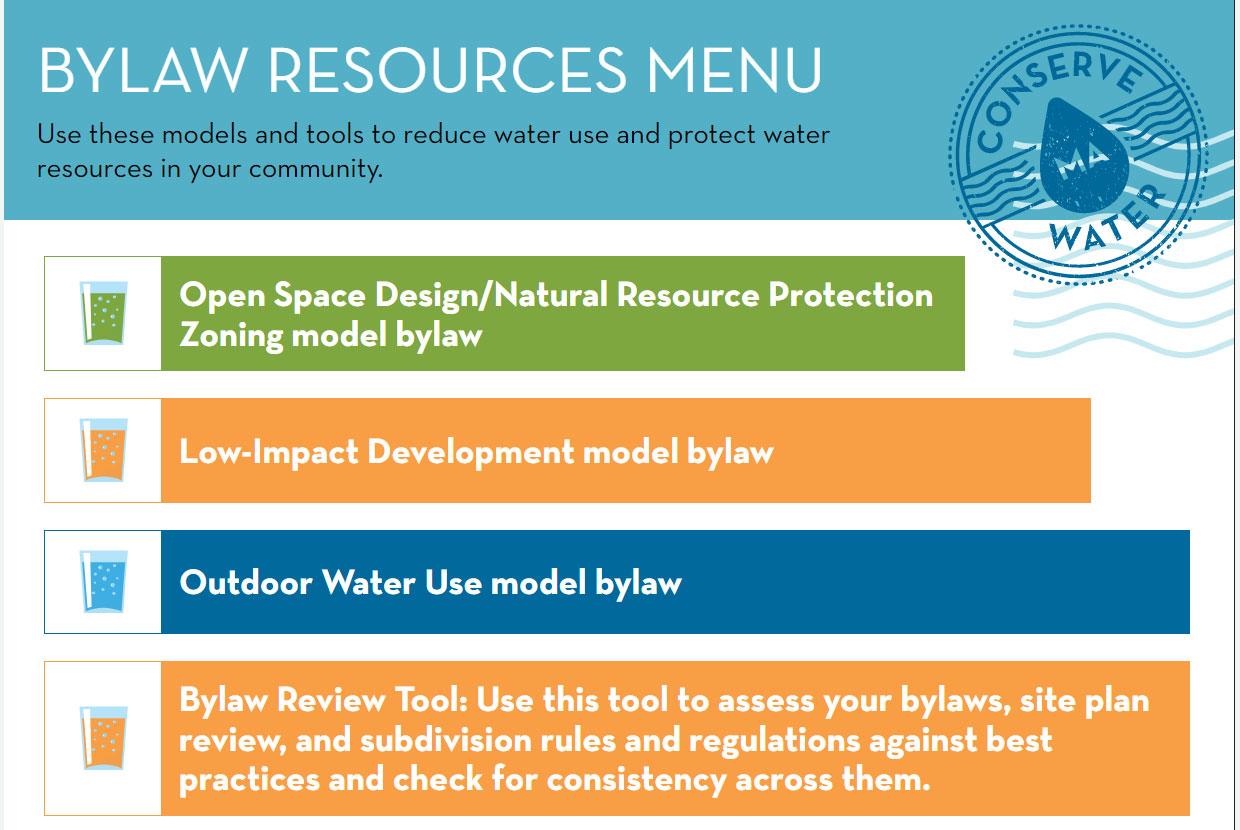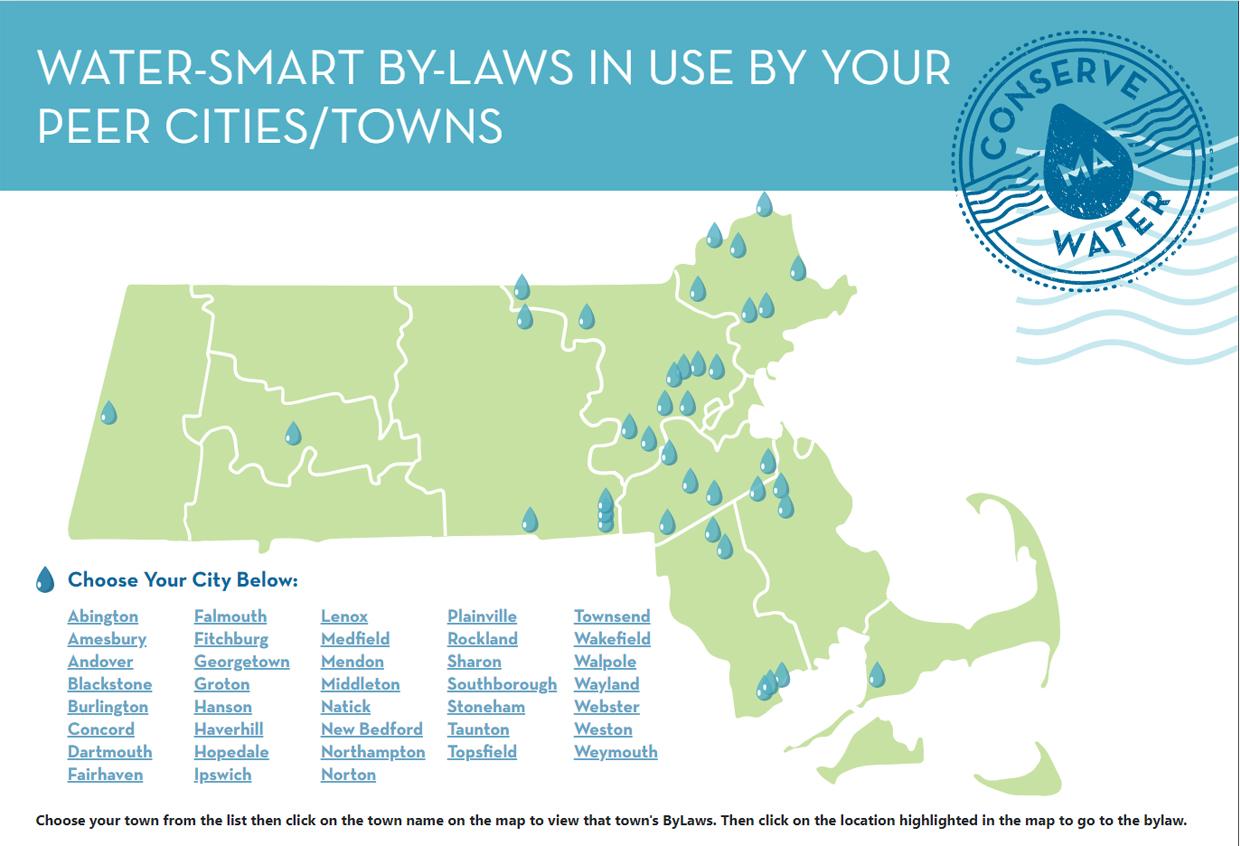- Water-smart land-use planning
- Local water conservation program
- Local drought management plan
Decisions that planning staff and boards make about land use have a profound effect on water availability and quality in your community.
How? For starters, think about what happens when land is covered with acres and miles of paved surfaces. Rain falling on these hard surfaces runs off into storm drains, picking up pollutants that are then dumped into water bodies. Allowing more opportunities for rain to fall on open land gives water a chance to soak in, be filtered by soils, and replenish groundwater.
When reviewing projects, consider these water-smart planning practices:
- Encourage compact development: this minimizes paved surfaces that prevent water from soaking into the ground and replenishing groundwater.
- Limit land clearing and loss of vegetated cover and preserve natural vegetation.
- Prohibit topsoil stripping and earth removal and require a minimum 6-inch depth of topsoil on all cleared areas to help retain moisture.
- Restrict topographic alterations and require that natural topography be maintained.
- Reduce the amount of paved surfaces by allowing narrower roads, smaller parking areas, and shared driveways.
- Encourage the use of paving materials that allow water to soak into, rather than flow over, the surface.
Looking for examples of local bylaws/ordinances or regulations for these practices?
Want to learn more? Mass Audubon has developed a suite of tools to help communities grow while preserving community character and protecting natural resources. These resources include water-smart planning tools, such as conservation design, low-impact development, and green infrastructure. Fact sheets are provided on best management practices, local case studies, and bylaws and ordinances. The bylaw review tool will help you evaluate your bylaws/ordinances and regulations in comparison to these best practices.
Water-neutral growth tools
A community can grow without having the demand on its water supply skyrocket. A tool for achieving this water-neutral growth is a water-offsets program. Water offsets allow new water use in one part of the system by reducing existing water use in another part. How do they work?
Let’s say a developer proposes new housing with 1,000 units. The new units will increase water use in the community by 0.15 million gallons per day (mgd). To offset this additional demand on the water system, the developer could remove 0.15 mgd or more from an existing use by, for example, replacing older toilets in an existing complex with new high-efficiency toilets.
For help in setting up a water offsets program, see the Net Blue toolkit. The toolkit includes a model ordinance, a spreadsheet for calculating water offsets, and examples.
Communities should develop a local water conservation program that addresses the following elements:
- Water system efficiency
- Water rates
- Outdoor water use – by both municipal facilities and your water system customers
- Indoor water use – by both municipal facilities and your water system customers
- Water-smart land-use planning
- Communication and outreach
You will find tips, tools, and resources on each of these elements throughout this website.
Resources for developing a local water conservation program:
- Massachusetts Drought Management Plan (2019), Section 8.1
- Massachusetts Water Conservation Standards (2018)
- Water Conservation Program Operation and Management, AWWA Standard G480-13 (available from the American Water Works Association)
Developing a local drought management plan will help strengthen the community’s ability to provide enough water during a drought. A DMP should outline key actions to be taken in preparation for and during a drought. Read more here. Developing a local drought management plan will help strengthen the community’s ability to provide enough water during a drought. A DMP should outline key actions to be taken in preparation for and during a drought. While such a plan is usually spearheaded by the water department, many aspects of the plan require coordination with town planners and local boards and commissions. Read more here.
Key Resources
- Alliance for Water Efficiency, Net Blue initiative
- Massachusetts Water Resources Commission: Offsets Policy Regarding Proposed Interbasin Transfers
Toolkit - Site Map > Municipalities > Planners, Conservation Commissions, and Land Use Boards




